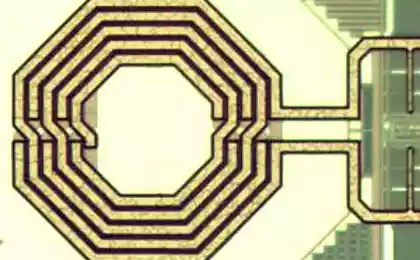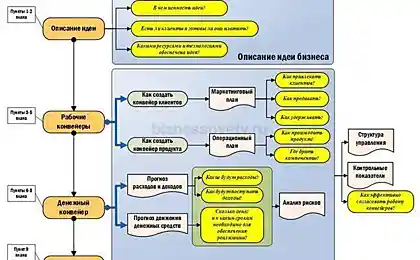382
Boyd Loop: How to use to get favorable conditions in negotiations

Imagine a situation: you enter the meeting room, where the fate of a multimillion-dollar deal is decided. The opponent seems impregnable, his position reinforced concrete. But you have a secret weapon - a strategy devised by an American military pilot that helped win air battles and is now taking over the business world. This is Boyd's Loop, and today you'll learn how to turn it into a tool for negotiating dominance.
The Birth of Strategy in the Heavens of War
John Boyd did not plan to revolutionize the negotiations. This American pilot and military strategist in the 1950s solved the problem of survival in air combat. His discovery changed not only military tactics, but also approaches to decision-making in business, politics and personal life.
The story of Boyd's loop began with a simple observation. American pilots on the F-86 Sabre regularly defeated faster and more maneuverable Soviet MiG-15s in the skies over Korea. Technical specifications said otherwise, but the statistics were inexorable: the winning ratio was 10:1 in favor of the Americans.
Boyd realized it wasn't about speed or maneuverability, it was about being able to make decisions faster. The pilot, who was able to assess the situation earlier, make a decision and act, received a decisive advantage. Thus was born the concept of OODA – a cycle of observation, orientation, decision and action.

Loop Anatomy: Four Phase Dominance
Observe (Observation)
Gather information about all aspects of the situation. In negotiations, this means analyzing not only words, but also body language, intonations, pauses, reactions of the opponent.
Orient (Orientation)
Analysis and interpretation of collected information through the prism of own experience, knowledge and goals. The key phase that determines the quality of subsequent decisions.
Decide (Decision)
Choosing the optimal course of action based on the analysis. It is important to make decisions quickly but carefully.
Act (Action)
Implementation of the decision. Action must be decisive and consistent, creating a new reality for the opponent.
Psychological basis of effectiveness
The power of the Boyd Loop lies not only in logical consistency but also in a deep understanding of human psychology. When you act faster than your opponent, you create a state of information overload and stress.
Neuroscience confirms the effectiveness of this approach. When a person does not have time to adapt to a changing situation, the stress system is activated, which reduces the quality of decision-making. The prefrontal cortex, which is responsible for logical thinking, begins to work less effectively, giving way to emotional reactions.
Kahneman and Tversky’s research in behavioral economics shows that people tend to make irrational decisions under conditions of uncertainty. Boyd's loop allows you to create just such conditions for the opponent, while maintaining its own advantage in clarity of thought.
Practical application in negotiations
Preparatory phase: building information excellence
The success of Boyd's loop in negotiations begins well before the meeting. Deep preparation is your strategic reserve, which will allow you to act faster and more accurately than your opponent.
Professional negotiators spend three times more time preparing than they do negotiating. Study not only the subject of negotiations, but also the personality of the opponent, his motives, limitations, previous experience. Gather information about his company, financial situation, corporate culture.
Pay special attention to alternatives. Develop several scenarios and prepare appropriate strategies. This will give you the flexibility to apply the Boyd Loop – you can quickly switch between tactics depending on the opponent’s reaction.
The Observation Phase: The Art of Reading Between Lines

In a negotiation, 93% of information is transmitted nonverbally. Observation within the Boyd loop means creating a system to collect and analyze all available signals. Watch for facial expressions, changes in posture, tone of voice, speech speed.
Signals of stress and insecurity are especially important: touching the face, changing breathing, avoiding eye contact. These signs indicate when the opponent is most vulnerable to influence.
Practical advice: Keep mental notes about the opponent’s reactions to various topics. What makes him tense? What's relaxing? This information will form the basis for subsequent phases of the loop.
The Orientation Phase: Forming a Strategic Vision
Orientation is the process of creating an internal model of a situation. In negotiations, this means understanding not only what is happening, but also why it is happening, what forces are driving the opponent, what his fears and desires are.
A key element of orientation is the identification of the opponent’s mental models. Each person perceives the world through the prism of their own experiences and beliefs. Understanding these filters allows you to predict reactions and adjust your strategy accordingly.
Remember: the goal of orientation is not to impose your point of view on your opponent, but to understand his logic and use it to your advantage. The best negotiators do not break the opponent’s mental models, but work with them.
The decision phase: choosing the optimal tactics
The decision within Boyd's loop should be quick, but not hasty. Based on the information collected and the analysis performed, but do not be afraid of intuition – it often captures patterns that logical analysis can miss.
Effective decision-making tactics in negotiations include several elements:
Risk and opportunity assessment: Each solution has potential benefits and threats. Quickly evaluate the ratio and make a decision based on maximizing the expected value.
Time management: In negotiations, time is a resource. Sometimes it’s better to make an imperfect decision quickly than the perfect decision late.
Planning for the next cycle: Each decision should take into account the possible reactions of the opponent and prepare the ground for the next iteration of the loop.
Action phase: implementation with maximum effect
Action is a moment of truth in Boyd's loop. All previous phases were preparations for this moment. In negotiations, effective action is characterized by determination, clarity and the ability to create a new reality for the opponent.
The golden rule of action: Act with such speed and determination that the opponent does not have time to adapt to new conditions, but remain ready to start a new cycle of observation.
An important aspect of action is the control of the information flow. Do not disclose all the cards at once, dosing the information so that the opponent is constantly in a state of adaptation to new data.
Advanced application techniques
Multi-hinge strategy
Masters of negotiation are not limited to one Boyd loop. They create a cascade of interconnected cycles, each of which amplifies the effects of the previous one. While the opponent is trying to adapt to the results of the first loop, you are already running the second, the third.
This technique is particularly effective in complex multilateral negotiations, where multiple streams of information and decision-making must be managed simultaneously.
False loop technique
An advanced tactic is to create the appearance of using the Boyd loop when working on a completely different algorithm. The opponent who thinks he understands your logic is trapped in his own assumptions.
For example, you can demonstratively collect certain information, giving the opponent the impression of the direction of your thinking, and then act on completely different data.
Collective loops in team negotiations
When a team negotiates, Boyd's loop can be distributed among participants. One focuses on observation, the other on analysis, the third on decision-making. This increases the cycle speed and quality of each phase.
Common Mistakes and How to Avoid Them
Speed error
The most common mistake is trying to speed up the loop due to the quality of the analysis. Speed should be achieved through training and experience, not by skipping stages.
Fixing error: Attachment to the original plan and unwillingness to adapt to changing conditions. Boyd's loop requires flexibility and a willingness to review decisions.
Transparency error: The overly obvious application of the technique makes it predictable. Experienced negotiators can recognize the pattern and neutralize your advantage.
Isolation error: Applying the Boyd Loop in isolation from the overall negotiation strategy. Technology should serve specific purposes, not be an end in itself.
Ethical aspects of application
The Boyd Loop is a powerful tool of influence, and its application requires ethical responsibility. The difference between manipulation and effective negotiation lies in goals and methods.
The ethical application of the Boyd Loop aims to create mutually beneficial solutions through better understanding of the situation and more effective decision-making. Unethical - on deception and coercion to unfavorable conditions.
Long-term relationships are more important than short-term benefits. The use of the Boyd Loop to create win-win solutions builds reputation and builds the foundation for future successful interactions.
The Path to Mastery
Boyd's Loop is not just a technique, it's a way of thinking. Its development requires constant practice, introspection and a willingness to learn from every experience. Start with simple situations, gradually increasing complexity. Mastery comes not from knowledge of theory, but from the ability to intuitively apply principles in real-world conditions.
Glossary
OODA Observe, Orient, Decide, Act (Observation, Orientation, Decision, Action) are the main phases of the Boyd loop.
Mental model An internal idea of how the world works, based on the experience, knowledge and beliefs of a person.
Information superiority Advantage in access to relevant information and speed of its processing.
Microexpressions Short-term involuntary facial expressions that reflect a person’s true emotions.
Cognitive load The amount of mental effort used in working memory to process information.
Cascade of loops A sequence of interrelated OODA cycles where the outcome of each cycle influences the next.
Tempo advantage The ability to act faster than the opponent, controlling the rhythm of interaction.
Strategic orientation The process of analyzing and interpreting information to form a holistic understanding of the situation.
How to deal with someone who is always complaining
Ukraine's pre-production potato: full guide through choice and grow quality harvest





















